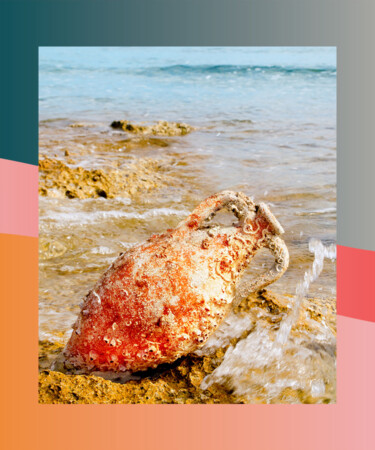European researchers have gotten a new insight into how ancient Romans might have stored wine.
A 2018 dive off the Italian coast just 90 km southeast of Rome unearthed artifacts including several wine vessels. The jars are believed to date back to the second century BC to the first century BC. A report, released June 29, lends historians new information about how the Romans might have stashed wine: Pine resin-coated bottles.
Three different types of vessels were included in this discovery. One, with a high, thin neck and triangle-shaped rim, included a label inscription. It’s believed to be from the second half of the second century BC.
Another includes a large, round body with a cylindrical neck and missing handles. It’s been estimated to originate sometime between the last quarter of the second century BC and the first half of the first century BC.
The third vessel, with thick walls, was discovered to be fractured and missing both the neck of the bottle and handles. This type of bottle was widely used in the Mediterranean to transport olive oil or wine, but researchers believe it contained wine due to the pine resin coating on the inside of the vessel.
The report concludes that wood tar — not local to the area — was used to waterproof the inside of the wine containers. The Romans stored both red and white wine this way, according to the report.
Researchers compared the samples against local wild grapevines, pollen and plant tissue to determine the origin of the wine. The archaeologists found the wine to be genetically similar to today’s wild varietals, from the local area in Italy. According to the report, it’s also possible that the containers also stored a type of grape-based medical beverage.
The archaeological site is believed to be the location of a submerged Roman port, including a possible local production site.
